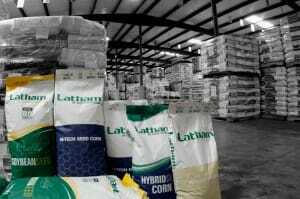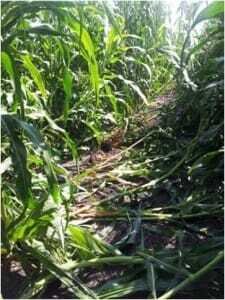
Farmers throughout history have raised corn yielding 300 bushels per acre (bu/A). In 1985, Illinois farmer Herman Warsaw produced corn yields of 370 bu/A. Warsaw spent years working toward his goal. He patiently built up soil nutrition and tilth for better plant health.
So what do we need to do to raise 300-bushel corn? Like Warsaw, we must commit to plan. Our plan must involve soil fertility, which takes into account nitrogen and micronutrients. Weather dictates when nitrogen (N) can be applied, its availability to the plant and its usability by the crop.
Nitrogen loss can occur immediately after application, and leaching can occur after N has been incorporated into the soil. That’s why renowned corn yield researcher Dr. Fred Below uses a stabilizer when applying his nitrogen. His fertility program also includes aggressive rates of Phosphorus (P) and Potassium (K) to push for higher yields. Potassium is very important but is often lacking, especially in a drought year like 2012.
“As growers, we need to look at agronomy first. It’s important to build a good database for each field, understand interactions of nutrients and use the tools to apply the agronomy,” said Ron Olson, who was one of the first consultants nationwide to use GPS/GIS tools to assist farmers in managing Precision Ag databases. From 1974 to 1996, Ron owned an independent agronomic consulting company based in Illinois.
Today Ron serves as Research and Development Manager – New Products for the Mosaic Company. During a recent presentation in Des Moines to Seed-2-Soil and SciMax client, Ron admitted that a lot of work must be done to consistently achieve 300-bushel corn yields. However, he says taking incremental steps will lead to higher yields overall.
 Nutrient management is key to increasing yield, according to research done in cooperation with Dr. Below and the University of Illinois. This research uses “omission plots” that compare corn both with and without fertilizer, fungicide, insecticide and seed treatments. While yields increase with each of these additions, fertility has the most impact.
Nutrient management is key to increasing yield, according to research done in cooperation with Dr. Below and the University of Illinois. This research uses “omission plots” that compare corn both with and without fertilizer, fungicide, insecticide and seed treatments. While yields increase with each of these additions, fertility has the most impact.
In addition nutrient management, other factors influence yield. Click here to see Dr. Below’s 7 Wonders of the Corn World, which are the seven factors that have the most influence on yield.


















